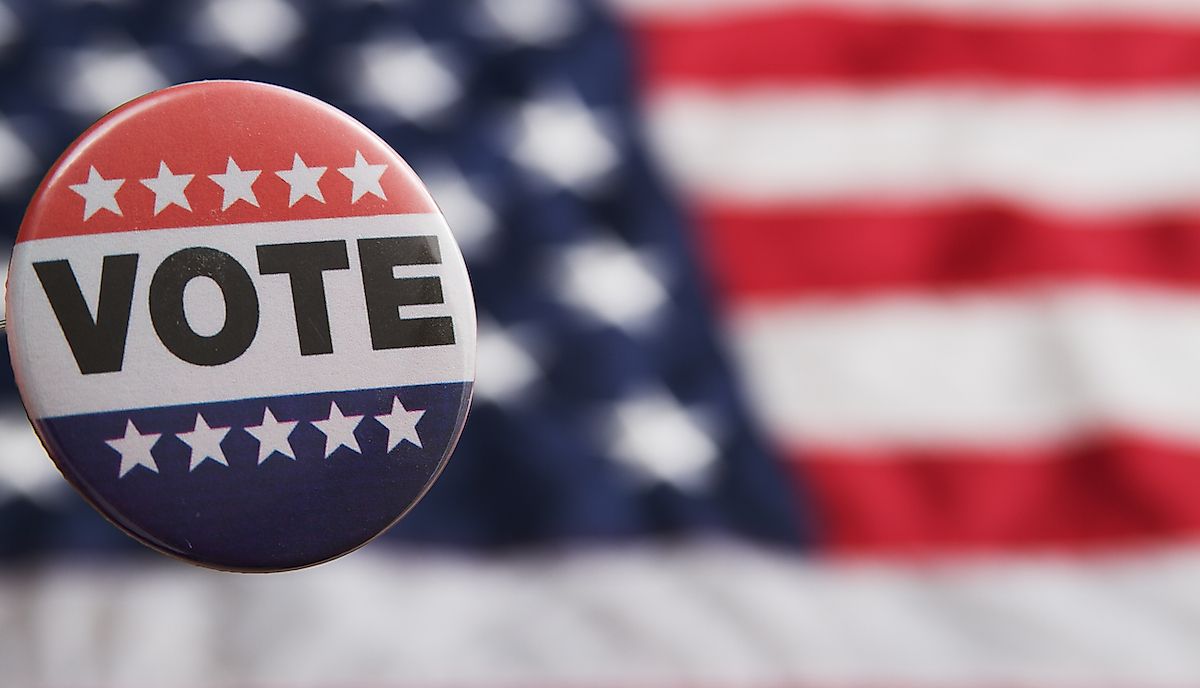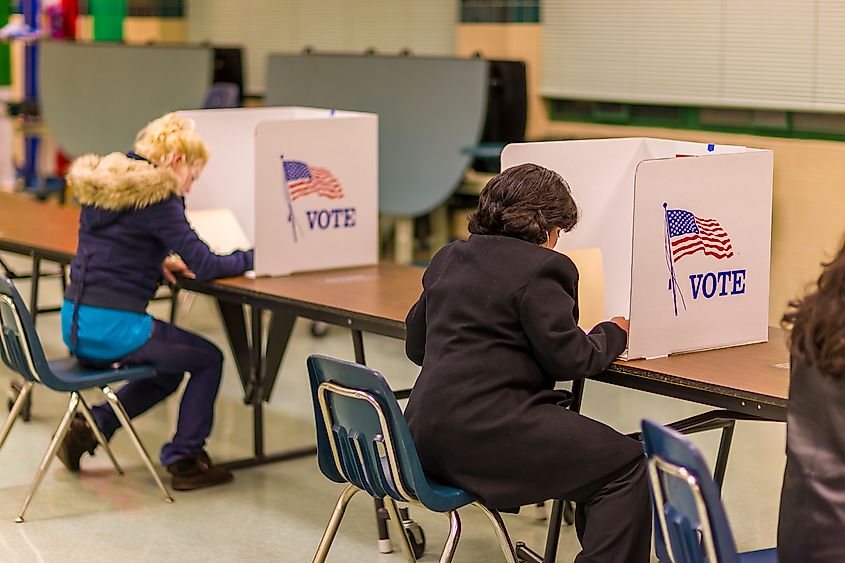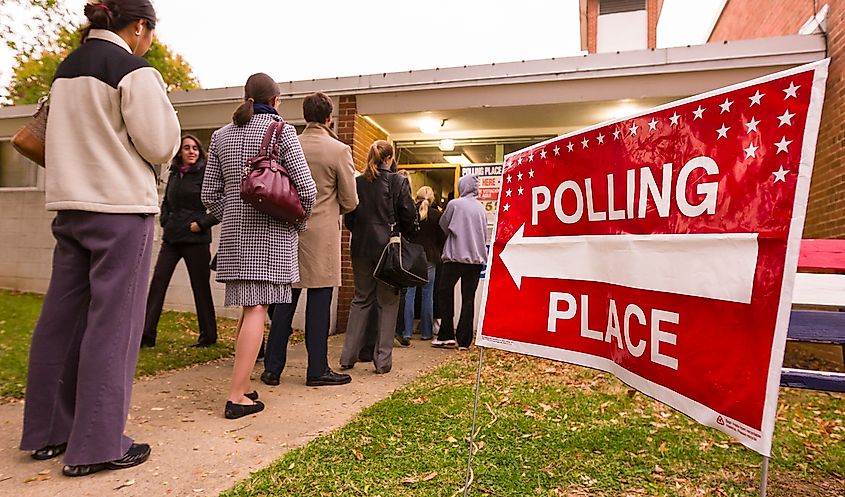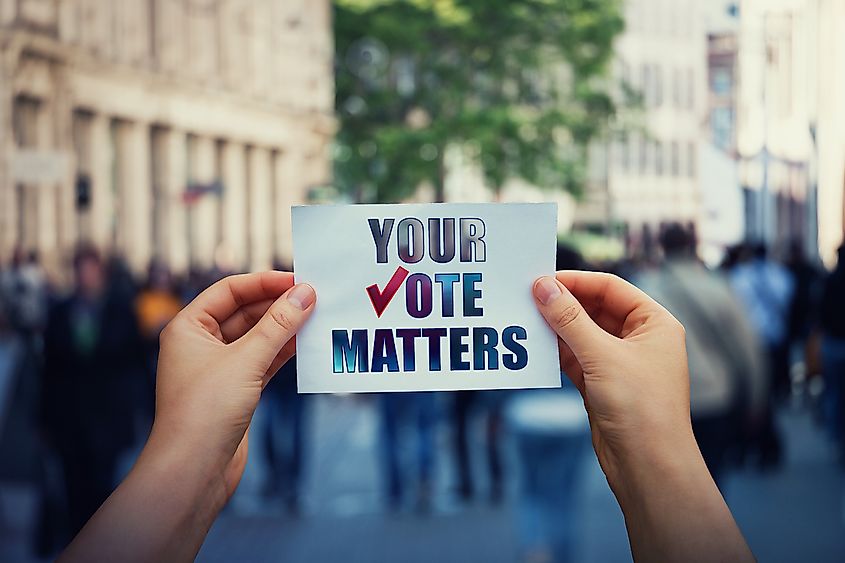Why Is Voter Turnout In The United States Lower Than That In Most Developed Nations?

- In the 2016 US federal election, fewer than 54% of the voting age population turned out to vote, and those who did not vote had multiple reasons for doing so.
- In other developed countries around the world, such as Belgium, voter turnout is well over 80%, but sometimes the process is easier, or mandatory.
- The top reason eligible voters did not cast a ballot in the 2016 US election was that they did not like the candidates nor the campaign issues.
Picture the scene: it is election day. The person currently holding office is causing an uproar in the media and vast crowds have been chanting their name in disapproval, protesting in the streets. People are vowing to get rid of them. And now the time has finally come. The polls are open and as the night wages on, long lineups form outside on darkening city streets. The people are eager for change, and there is hope in the air that this time, this time the victory of good just might come.
But in some towns, the polling stations sit nearly empty. Government officials chat over cups of coffee and only stop as the odd voter trickles in, wanting to cast their ballot. So, where is everybody? Where are the fighters in these places, now that their time has come?
The US is famous for its freedoms. Democracy has its perks. The country is also renowned for its low voter turnout. When looking at election data tables from other developed nations around the world, the facts can be somewhat staggering.
According to Statista.com, in 2012, the US was thirteenth when it comes to the percent of the voting age population (VAP) that cast a ballot in the federal election, compared with other selected developed nations. Ahead of it sat Belgium, Turkey, Sweden, South Korea, Israel, France, Germany, Canada, Greece, and the UK, to name just the top ten countries in descending order. The US was said to have a voter turnout in the 2016 presidential election of just about 53.6%. Almost half of the voting age population (VAP) in the country never acted on their right to vote for the leader of the most powerful nation in the world. According to NPR.org, fewer than four in ten adults who were eligible to vote cast a ballot in the 2010 and 2014 American midterm elections.
Why so many American citizens do not act on their right to vote is not entirely known, but part of it is due to the unpopularity of candidates and the campaign issues, and the timing of voting day, when most Americans are at work.
Unpopular Candidates And Campaign Issues, And Not Making A Difference

In a survey conducted by Pew Research Center, it was found that the top reason registered voters did not vote in the 2016 federal election in the US was because they did not like the candidates nor the campaign issues being talked about. The second most common reason was that potential voters were not interested in voting. They felt their vote would not make any difference.
This voter disengagement is also reflected in an article on NPR.org entitled “On the Sidelines of Democracy: Exploring Why So Many Americans Don’t Vote.” Writers stated that Kei Kawashima-Ginsberg, the director of CIRCLE, an initiative at Tufts University, surveyed working-class youth and found that almost 20% said they “didn’t know enough to be able to vote”, and furthermore, most did not consider voting to be an effective way to change society. Many young nonvoters told NPR that they did not feel their vote mattered. In some cases, this may seem to be true. People in McDowell County, West Virginia, for example, displayed the lowest voter turnout in the state. West Virginia itself also had an overall low voter turnout in 2016. The county is rundown and lacking jobs, with youth needing to leave to carve out a future elsewhere. Locals told NPR they did not feel their voice would change anything, when it came to voting for politicians. The area continues to be overlooked no matter how they vote. This disengagement between potential voters and the people running and the policies they are pushing, is one reason for low voter turnout in the US.
Troublesome Voting Hours

The third most common reason people said they did not vote in the 2016 election was that they were too busy and could not make it to the polls. Simply put, they had other stuff to take care of. When it comes to young voters, especially in low-income areas, many are working multiple jobs to make ends meet. They may have odd working hours, and not feel they can afford the time off to go vote. Other young voters are in school, and also do not feel the pull to miss class in order to cast a ballot they might not feel makes any difference.
Voting takes place in the US on a Tuesday, and as Michael McDonald, a political scientist at the University of Florida who tracks turnout with U.S. Elections Project, told NPR.org, "They (young voters) decide they've got a lot of other things going on in their lives." It is true that in some places, voters can cast a ballot by mail, but again, this takes some research to do, pre-planning, and time. A few states have all mail voting procedures and no in-person polls. The rest have polls you can attend, but the latest they are open is 9pm, and some close as early as 6pm. For someone who works a night shift and does not plan to vote by mail, this presents a problem.
Other Problems
There are other reasons people who can vote do not in the US. Some say the fact that citizens need to register themselves to vote and that it is not done for them automatically, as is the case in Belgium, presents a barrier to voting. Most people CAN register themselves to vote if they are eligible but it is an extra step to take, and as such is a deterent. Other people have problems registering, they are sick or disabled at the time of voting and cannot make it to the polls, they may be out of town or away from home, some forget to vote, and others could not obtain transportation to the polls, Pew Research Center says. There are numerous reasons why millions of eligible Americans do not ever cast a ballot on election day.
Engaging Voters

As NPR.org points out, when people who can vote do not, it presents the country with a greater problem than one candidate not winning an election. Voting is more than casting a ballot. In a way, it can be a two-way street. When people refrain from voting, the elected leaders will also refrain from targeting their policy change to reflect them. So, there is a good reason why some people do not hear issues important to them being discussed by politicians: the politicians think these people do not care about them. A higher number of older people actually vote compared with younger people, and this is why changes to Medicare are often talked about by politicians. If enough younger voters and those who are disengaged would rise up and cast a ballot, the issues important to politicians might change.
Why Is Voter Turnout In The United States Lower Than That In Most Developed Nations?
| Rank | Country | Voter turnout in most recent election |
|---|---|---|
| 1 | Belgium | 87.2% |
| 2 | Turkey | 84.3% |
| 3 | Sweden | 82.6% |
| 4 | South Korea | 80.4% |
| 5 | Israel | 76.1% |
| 6 | France | 71.2% |
| 7 | Germany | 66.0% |
| 8 | Canada | 62.1% |
| 9 | Greece | 62.1% |
| 10 | United Kingdom | 61.1% |
| 11 | Spain | 60.9% |
| 12 | Poland | 53.8% |
| 13 | United States | 53.6% |
| 14 | Japan | 52.0% |
| 15 | Switzerland | 38.6% |











